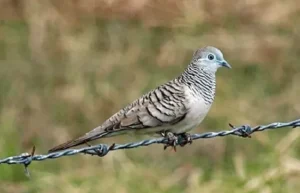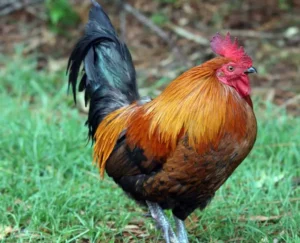Java, an island rich in biodiversity, harbors various unique animal species of Java that unfortunately face a serious threat of extinction. Factors such as the loss of their natural habitat due to rapid urban development, uncontrolled poaching, and unpredictable climate changes have pushed some animal species of Java to the brink of extinction.
In this article, we will focus on 13 typical animal species of Java that are on the verge of disappearing, delve deeper into the threats they face, and discuss the urgency and importance of conservation efforts to preserve this precious natural heritage.
13 Typical Endangered Animal Species of Java
1.Javan Hawk-Eagle
Source: faunadanflora.com
The Javan Hawk-Eagle, scientifically known as Spizaetus bartelsi, is one of the typical animal species of Java that deserves serious conservation attention. Found only on the island of Java, this eagle faces major challenges that could jeopardize its survival. Threatened by the loss of its natural habitat due to urban development and intensive poaching, the Javan Hawk-Eagle population is experiencing a drastic decline. Their presence is crucial for maintaining ecosystem balance, and ensuring their survival requires serious efforts from various stakeholders.
As a symbol of nature’s power in Java, the Javan Hawk-Eagle captivates with its impressive wings and majestic appearance. However, this allure is threatened by human actions destroying their habitat. Deforestation and logging pose a significant threat, reducing the eagle’s living space and forcing them to compete with humans for natural resources. To protect this precious natural heritage, concrete measures are needed to mitigate these threats.
Effective conservation measures for the Javan Hawk-Eagle require collaboration between local communities and international organizations. Protecting their natural habitat, strict monitoring of poaching, and increased awareness among the population about the importance of sustainability are crucial components of these rescue efforts. By involving all stakeholders and focusing efforts on conserving these typical animal species of Java, we can collectively ensure that the Javan Hawk-Eagle continues to reign in the skies of the Java island and maintain the balance of its natural environment.
2.Javan Gibbon
Source: idntimes.com
The Javan Gibbon, or Trachypithecus auratus, is an endemic primate of the tropical forests of Java and faces serious pressure due to environmental changes. With its characteristic reddish fur, this social primate is threatened by the loss of its natural habitat and hunting. Continued deforestation and agricultural expansion have led to a loss of home for the Javan Gibbon, causing a significant decline in its population.
Conservation of the Javan Gibbon is becoming increasingly urgent, as we risk losing the genetic diversity and unique behaviors of this species. Effective conservation efforts must focus on two main aspects: preserving natural habitat and rehabilitating injured gibbons. By prioritizing the sustainability of their natural habitat, we can offer better chances of survival to Javan Gibbons.
Furthermore, public education is also an essential element of the conservation strategy. Increasing public awareness about the importance of preserving Javan Gibbons in their natural habitat can help reduce the demand for these animals as illegal pets. By rallying common support and involving the community in conservation efforts, we can positively contribute to the preservation of Javan Gibbons and maintain the balance of their ecosystem. Thus, collaboration and collective action are essential to ensure a more promising future for this iconic primate of Java.
3.Javan Slow Loris
Source: binatang.mewarnaigambar.web.id
The Javan Slow Loris, or Nycticebus javanicus, is a nocturnal primate that enchants with its large eyes and long tail. Unfortunately, their beauty is threatened by two main sources of danger: hunting and illegal trade, as well as the loss of their natural habitat. Hunting for illegal trade has led to a significant decrease in the population of the Javan Slow Loris, and ongoing deforestation further reduces their living space.
Recognizing the crucial role of the Javan Slow Loris in the balance of the nocturnal ecosystem, conservation becomes an urgent necessity. Strict enforcement of laws against illegal trade is a crucial first step. Additionally, the rehabilitation of injured lorises is also an important aspect of preservation efforts. Maintaining their natural habitat and providing care to affected individuals will help ensure the survival of this species.
Involvement of the local community and support from international organizations are key to ensuring the sustainability of the Javan Slow Loris population. Involving the community in conservation efforts can raise awareness about the importance of preserving this species and keep it away from the threat of extinction. With close collaboration between stakeholders, we can positively contribute to the preservation of Javan Slow Lorises and maintain the biodiversity of the Java island.
4. Javan Rhinoceros
Source: 1001indonesia.net
The Javan Rhinoceros, or Rhinoceros sondaicus, is a typical animal species of Java severely threatened by poaching and habitat loss. Once widespread in Southeast Asia, the Javan Rhinoceros has seen a dramatic population decline, placing it on the brink of extinction. Hunting for their horns, used in traditional medicine, and the continuous destruction of their natural habitat are the main threats this species faces.
The survival of the Javan Rhinoceros depends on concerted efforts to protect their habitat and combat poaching. The establishment of nature reserves and the implementation of strict security measures are crucial for their preservation. Additionally, public awareness initiatives about the importance of Javan Rhinoceros conservation can contribute to mobilizing broader support for these efforts.
Collaboration between local governments, conservation organizations, and indigenous communities is essential to develop effective conservation strategies. Protecting the Javan Rhinoceros requires a holistic approach, encompassing habitat protection, poaching prevention, and public awareness. By working together, we can hope to offer a safer future for this iconic species of Java.
5. Javan Leopard
Source: satwa.foresteract.com
The Javan Leopard, or Panthera pardus melas, represents the diversity of typical animal species of Java currently facing a serious threat of extinction. Their beauty, reflected in their shiny fur and unique patterns, cannot protect them from the pressure resulting from the loss of their natural habitat and conflicts with humans. The land conversion process for agriculture and ongoing deforestation continue to deprive the Javan Leopard of its natural habitat, forcing their population to compete with humans.
To save the Javan Leopard, conservation efforts focused on habitat protection and mitigation of human-animal conflicts are necessary. Through these measures, we can ensure they have sufficient space to breed and maintain the sustainability of their population. Rehabilitation and reintroduction efforts can also play a crucial role in supporting threatened populations. Public education about the importance of sustainability and how to reduce human-animal conflicts is also essential to support Javan Leopard conservation.
By raising awareness, we can minimize the potential for conflicts and create an environment where humans and animals can coexist harmoniously. Close collaboration between the government, conservation agencies, and local communities is necessary to ensure the success of these conservation efforts. Only with collective effort can we ensure the survival of the Javan Leopard as an integral part of Java’s unique natural heritage.
6. Javan Banteng
Source: mongabay.co.id
The Javan Banteng, or Bos javanicus, is a typical animal species of Java currently facing a serious risk of extinction due to habitat loss and pressure from illegal hunting. With its characteristic curved horns and powerful body, the Javan Banteng has become a symbol of nature’s strength in Java that deserves preservation. However, their existence is increasingly threatened by illegal hunting targeting their horns, considered to have particular economic value.
The loss of their natural habitat also reduces the Javan Banteng’s movement space, increasing the vulnerability of their population. To save the Javan Banteng, conservation is the key. Protecting their natural habitat and closely monitoring illegal hunting are essential measures to protect this species from extinction. These conservation efforts not only involve preserving the environment of the Javan Banteng but also entail the active participation of local communities in the preservation of typical animal species of Java.
Breeding and reintroduction programs for the Javan Banteng into their original habitat are important strategies to increase the population. With this approach, we can address the challenges facing the Javan Banteng population and strengthen their genetic resilience. Involving local communities in conservation efforts is a key factor in raising awareness and supporting the preservation of Java’s natural heritage. Only through strong collaboration among stakeholders can we provide effective protection to the Javan Banteng and ensure the continued growth of Java’s biodiversity.



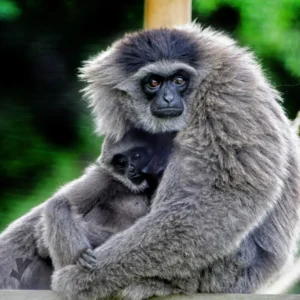


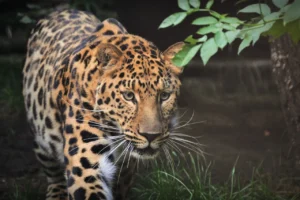


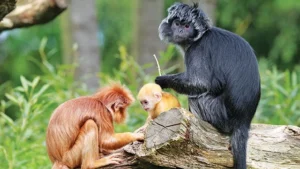
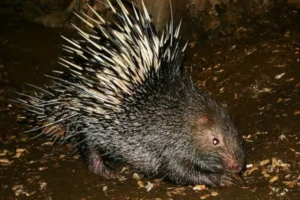 Source: satuharapan.com
Source: satuharapan.com